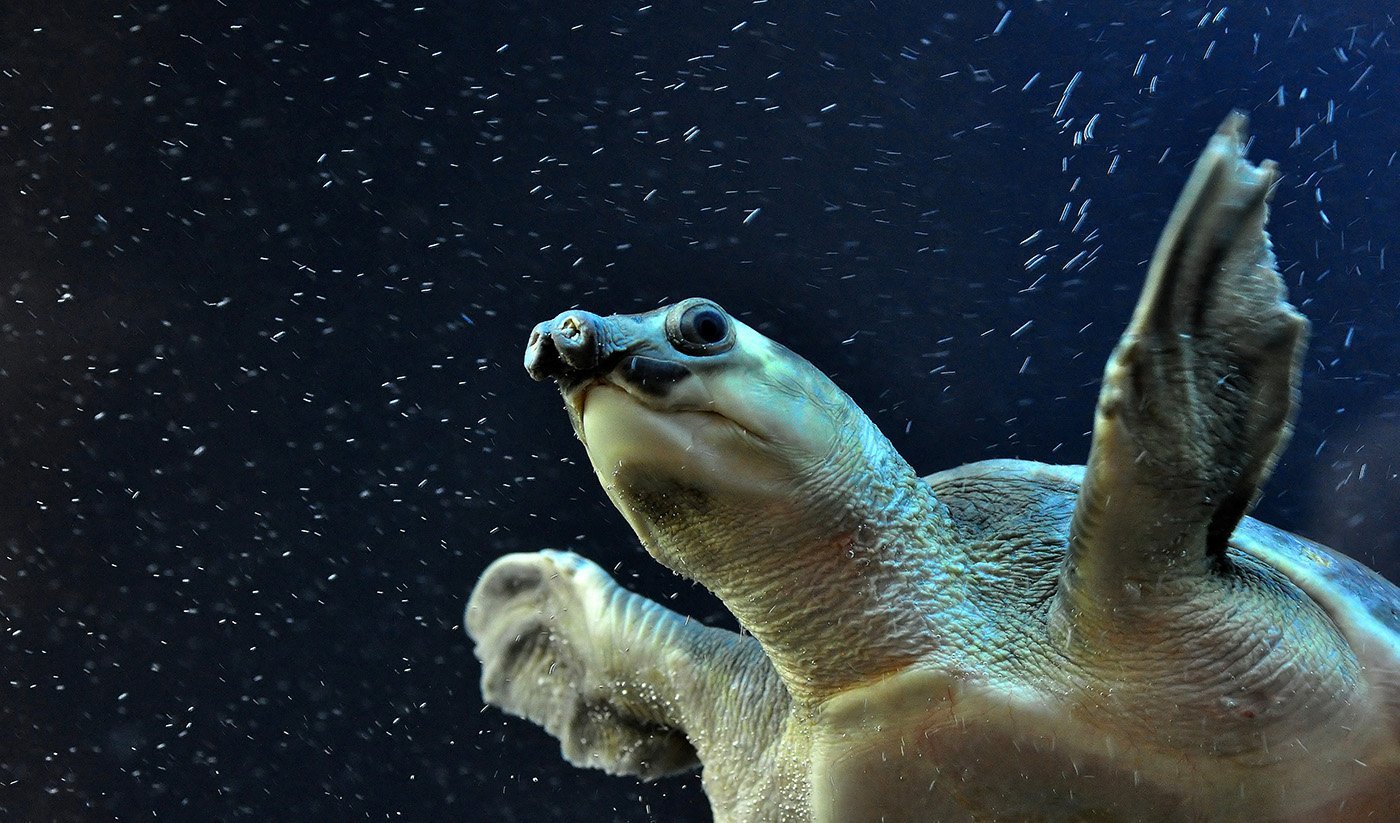| Common name | Pig-nosed turtle |
| Scientific name | Carettochelys insculpta |
| Type | Reptile |
| Diet | Aquatic plants; fruits and flowers of fig, bush apple and eucalypt trees that fall into the water; freshwater crustaceans, insects, molluscs |
| Average lifespan | 25–30 years |
| Size | Reaches a weight of about 30kg; shell up to 70cm long |
No other turtle in the world looks like this one, thanks to its nose with nostrils that sit on the ends of snorkel-like extensions.
The pig-nosed turtle is able to absorb oxygen from water across multiple papillae – fleshy skin bumps – in its throat. But, like all other turtles, it also needs to breath air and its strange nasal apparatus allows it to do that while the rest of its body remains submerged, hidden from potential predators.
Because of this it’s able to spends almost its entire life in the water. Not surprisingly it’s adapted in many other ways to an aquatic lifestyle, particularly in it strong and agile swimming capabilities. These are aided by flippers, like those seen more often in marine rather than freshwater turtles.
The strange-looking fleshy nose also has another function: it’s a sensory organ that helps the pig-nosed turtle locate food in murky water.
In Australia, this turtle species is found only in the Northern Territory, notably in slow-flowing streams and still-water lagoons of the drainage systems of the East Alligator, South Alligator, Daly and Victoria Rivers. It also occurs in New Guinea and West Papua.
The pig-nosed turtle is an ancient species; the only survivor of a family that first appeared on Earth about 140 million years ago, well before the dinosaurs went extinct. It’s unusually large for a living freshwater turtle species, with a huge shell that can can grow to 70cm in length and is covered in leathery skin, rather than the hard scale-like scutes that overlay the shells of other turtles.
It’s not known how many of these turtles survive in Australia but introduced water buffalo are potentially a major threat. These trample the nests of pig-nosed turtles, which are located on riverbanks above the water level. Buffalos also disturb vegetation along the water courses where these turtles live, contributing to siltation.








